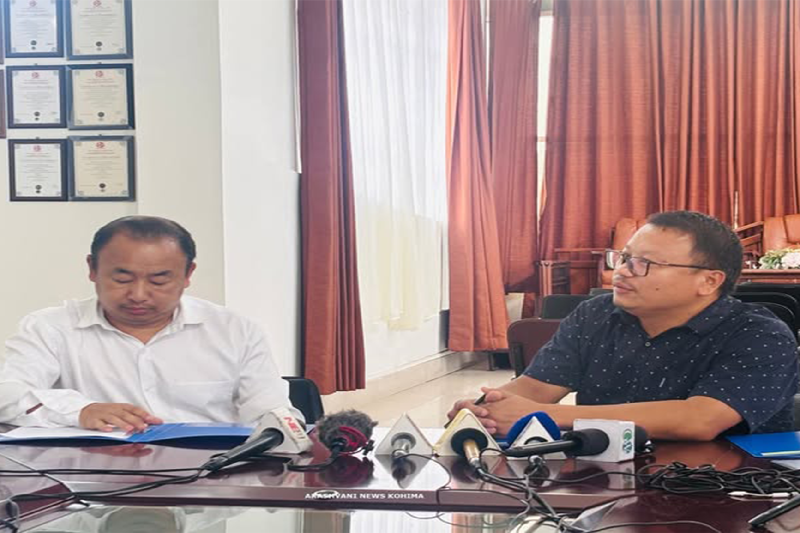
MGM University Researcher Dattatreya Chaudhary Secures Patent for Innovative Drug Preparation Process
In a significant milestone for both the individual and the institution, Dattatreya Chaudhary, a research scholar at MGM University, Aurangabad, has secured a patent for an innovative drug preparation process. His patented research, titled "Improved Process for the Preparation of Amorphous Eluxadoline," has been officially published by the Government of India, signaling national recognition of his contribution to pharmaceutical science.
This accomplishment not only highlights Chaudhary’s research excellence but also underscores MGM University’s commitment to fostering scientific innovation and academic rigor among its students.
The Research: Optimizing Eluxadoline for Better IBS Management
Eluxadoline is a medication widely used for managing Irritable Bowel Syndrome (IBS). This chronic gastrointestinal condition affects the large intestine, causing symptoms such as abdominal pain, bloating, and irregular bowel movements. The drug functions as a mu-opioid receptor agonist, which helps regulate intestinal activity by slowing down excessive bowel movements.
Chaudhary's patented research introduces an improved process for producing the amorphous form of Eluxadoline, enhancing its solubility, bioavailability, and metabolic efficiency. These improvements are critical in ensuring faster absorption and more consistent therapeutic outcomes, making his contribution highly relevant in the realm of modern drug development.
Patent Recognition: A National Validation of Scientific Innovation
The official publication of the patent by the Government of India represents a major validation of Chaudhary’s work. Patents in pharmaceutical chemistry, especially those involving process improvements, are difficult to secure due to stringent evaluation standards and rigorous scrutiny of originality, utility, and industrial applicability.
For a student researcher to receive such a distinction is rare, positioning Chaudhary among a select group of young innovators in the field.
“This patent is not only a personal achievement but also a reflection of the guidance, inspiration, and research culture offered by MGM University,” said Chaudhary.
Mentorship: The Pillars Behind the Patent
Chaudhary was quick to acknowledge the pivotal role played by his mentors, Dr. Suryakant Sapkal, Head of the Chemistry Department, and Dr. Suchita Gadekar, in guiding his research journey.
“I am very thankful to my mentors... for their motivation during this entire process,” he said. Their technical assistance and academic supervision proved essential in refining the project and navigating the complexities of patent filing.
This mentorship model is emblematic of MGM University’s academic ecosystem, where student potential is actively nurtured through close faculty engagement and a hands-on research approach.
Institutional Support and Community Recognition
The news of the patent has been met with enthusiastic support from the university leadership. Chancellor Ankushrao Kadam, Vice Chancellor Professor Dr. Vilas Sapkal, and Registrar Dr. Ashish Gadekar were among the senior officials who personally congratulated Chaudhary on his success.
“Dattatreya's achievement is a reflection of the spirit of innovation and academic excellence that MGM University aims to foster,” stated Dr. Vilas Sapkal, adding that receiving a patent as a student is a rare and commendable accomplishment. He emphasized the importance of proper mentorship, research infrastructure, and intellectual freedom in making such feats possible.
The Impact: Bridging Academia and Industry
This patent also holds practical implications for the pharmaceutical industry, particularly in drug manufacturing processes aimed at improving therapeutic outcomes for IBS patients. The amorphous formulation developed by Chaudhary may offer more efficient drug delivery systems, potentially reducing the dosage required while maintaining or improving efficacy.
With growing interest in cost-effective and high-bioavailability formulations, such innovations can pave the way for commercial collaborations, clinical trials, and large-scale production strategies.
Chaudhary’s achievement serves as a bridge between academic research and real-world application, showcasing how university-level investigations can lead to impactful medical advancements.
A Boost for MGM University's Research Ecosystem
This milestone adds to MGM University’s growing reputation as a hub for innovation and academic excellence. The institution has increasingly focused on interdisciplinary research, innovation-driven learning, and collaboration with industry. Chaudhary’s patent is a testament to these efforts, signaling that the university is not only producing graduates but also cultivating future leaders in science and technology.
By celebrating this patent, MGM University also reaffirms its commitment to supporting student-led research initiatives and fostering an environment where academic curiosity is recognized and rewarded with tangible, real-world impact.
Conclusion: A Defining Moment for Young Researchers in India
Dattatreya Chaudhary’s patent for an improved Eluxadoline preparation process marks a defining moment for young researchers across India. It demonstrates that cutting-edge innovation is not limited by age or experience but is instead driven by curiosity, mentorship, and a conducive academic environment.
As India continues to strengthen its focus on research and development in the pharmaceutical sector, stories like Chaudhary’s serve as an inspiration for future scholars to push boundaries and pursue ideas that can change lives.
MGM University’s celebration of this achievement signals not only pride but also an ongoing commitment to research-driven education—a vision that promises to shape India’s scientific future.



